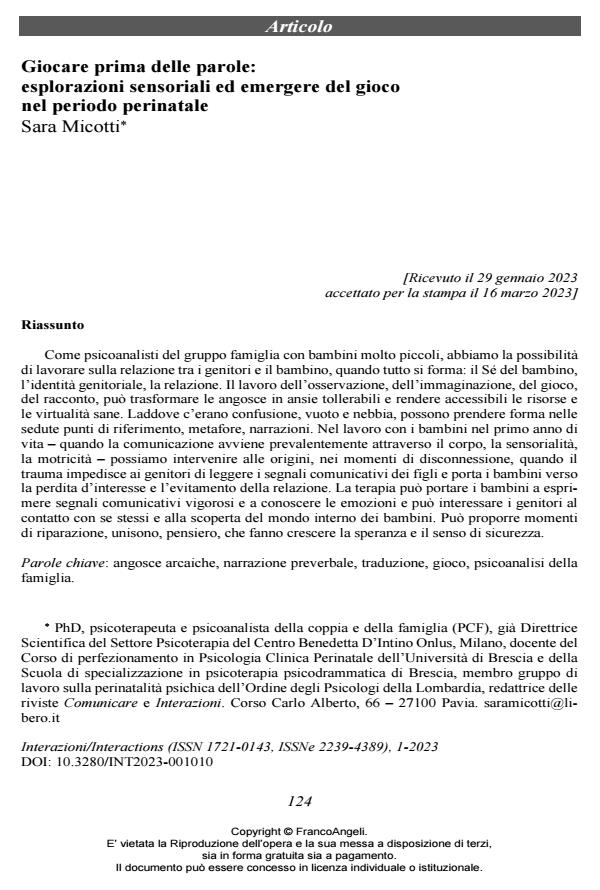Playing before words: sensory explorations and the emergence of play in the perinatal period
Journal title INTERAZIONI
Author/s Sara Micotti
Publishing Year 2023 Issue 2023/1
Language Italian Pages 17 P. 124-140 File size 213 KB
DOI 10.3280/INT2023-001010
DOI is like a bar code for intellectual property: to have more infomation
click here
Below, you can see the article first page
If you want to buy this article in PDF format, you can do it, following the instructions to buy download credits

FrancoAngeli is member of Publishers International Linking Association, Inc (PILA), a not-for-profit association which run the CrossRef service enabling links to and from online scholarly content.
As psychoanalysts of the family group with babies, we have the opportunity to work on the relationship between the parents and the child, when everything is formed: the child’s self, the parental identity, the relationship. The work of observation, imagination, play, storytelling can transform anxieties into tolerable emotions and make resources and healthy virtualities ac-cessible. Where there was confusion, emptiness and fog, reference points, metaphors, narra-tives can take shape in the sessions. In working with children in the first year of life ‒ when communication takes place predominantly through the body, sensory skills, motor skills ‒ we can intervene at the origins, in moments of disconnection, when the trauma prevents parents from reading the children’s communicative signals and leads children to loss of interest and relationship avoidance. Therapy can lead children to express strong communicative cues and learn about emotions, and it can interest parents in contacting themselves and discovering the children’s internal world. It can offer moments of reparation, unison, thought, which increase hope and a sense of security.
Keywords: archaic anxieties, preverbal narration, translation, playing, parent-infant psycho-therapy.
Sara Micotti, Giocare prima delle parole: esplorazioni sensoriali ed emergere del gioco nel periodo perinatale in "INTERAZIONI" 1/2023, pp 124-140, DOI: 10.3280/INT2023-001010